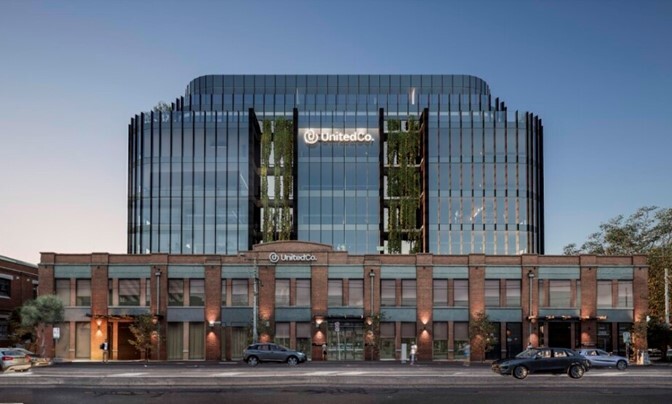How a former shoe factory became a benchmark for sustainable reuse and why the partnership between Co-Perform, Kahlon Group is now pushing for six stars.
Breathing new life into an old building
When Kahlon Group first looked at the two-storey brick warehouse on 425 Smith Street, Fitzroy, they saw a lot of potential. Once a shoe factory, the heritage significant site was quickly identified as an outstanding opportunity.
The vision was to retain the original structure and character while creating a contemporary commercial space that met modern performance standards.
To make it happen, they needed sustainability that would withstand council scrutiny, deliver measurable results, and make business sense.
That’s where Co-Perform came in.
Step one: clarity that wins approvals
Co-Perform was engaged to prepare the Sustainability Management Plan (SMP) and guide the development through the Yarra Council approval process.
From the outset, the pathway set by Kahlon Group was clear: reuse the existing building rather than demolish and rebuild. It wasn’t just a nod to heritage, it was a smarter sustainability strategy.
By highlighting the embodied carbon savings from retaining the structure, avoiding the emissions tied to producing and transporting new materials, Co-Perform helped demonstrate that this approach offered significant environmental benefit.
That reasoning struck the right chord with the Council. Approval was granted, setting the foundation for the project’s next evolution.
“We knew the embodied carbon story would matter,” says Co-Perform Director, Paul Graham. “Reusing that building meant avoiding thousands of tonnes of carbon emissions. It was the sustainable decision that also made heritage sense.”
Step two: a six-storey challenge
With approval in hand, the developer set out to build an additional six storeys above the original structure with a striking glass addition designed to open the building to light and views.
But glass buildings come with their own set of sustainability challenges. High glazing levels can mean higher cooling loads, more complex HVAC systems, and potential compliance risks.
Our role was to balance design ambition with performance reality. We prepared an updated SMP and engaged directly with Yarra Council to address every concern.
It was at this stage we recommended the client nominate a 5-star NAEBERS rating which they agreed and the council accepted.
When local objections were raised, we carried out a daylight study of the daylight quality and internal environment comfort, whilst meeting the 5 star NABERS energy requirement. Our data-driven modelling was submitted as part of the VCAT evidence and was accepted without challenge.
“VCAT accepted our evidence outright,” recalls Graham. “Our analysis proved the design would perform well, even with the high glazing, provided certain glazing performance metrics were met. That was a pivotal moment because it meant the project could move ahead without redesign or yield loss.”
Step three: performance that lasts
Once construction began, we provided energy compliance advice, building code and continued monitoring throughout delivery.
When the building opened as a premium coworking facility, the results spoke for themselves:
5.5-Star NABERS Energy rating, exceeding the initial target of 5.0.
The simplicity of the mechanical systems and attentive management, contributed to the outcome.
“The client’s commitment made all the difference,” says Graham. “They ran the building efficiently, kept things simple, and the data rewarded them for it.”
For the developer, the rating was a tangible boost to asset value and tenant appeal.
Step four: partnership beyond completion
The collaboration didn’t end when the certificate arrived. Recently, the developer has asked us to help them achieve 6-star NABERS rating.
That involves setting metering targets, monitoring usage patterns, and exploring low-impact operational improvements that can incrementally lift performance.
“Six stars is achievable,” says Paul. “It’s about focus, watching the data, engaging tenants, and finding those marginal gains that add up.”
This ongoing partnership reflects the heart of our approach: sustainability that sticks. Real results, built over time, through collaboration, clarity, and care.
What this project proves
The 425 Smith Street project is a reminder that true sustainability isn’t just about design innovation, it’s about follow-through.
Reusing existing structures reduces embodied carbon. Strong commitment wins council confidence. Collaboration between client, consultant team and the builder drives better long-term performance.
Projects like this prove that sustainability isn’t a one-off report, it’s a relationship. When the right people work together with clarity, approvals get easier, performance improves, and every building tells a better story.
At Co-Perform, we’re proud to partner with clients who see sustainability as an ongoing commitment where collaboration, persistence, and good data turn ambition into achievement.
Because when you build with clarity, the results speak for themselves.
Ready to build with clarity? Get in touch, we’d love to help.
